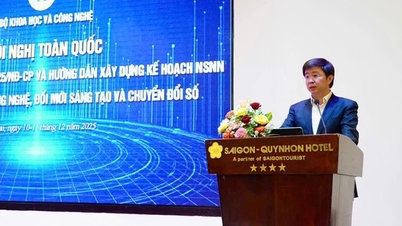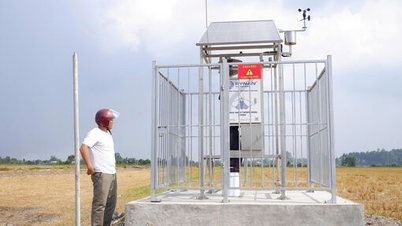Photo: Artist's Concept.
Scientists used the James Webb Space Telescope (JWST) to observe a disk of debris orbiting the young star HD 181327, located 155 light-years from Earth. The results revealed the clear presence of crystalline water ice – a type of ice similar to that found in the rings of Saturn and Kuiper Belt objects in our solar system. The Spitzer Space Telescope had previously suggested the existence of this type of ice in 2008, but only now has the JWST confirmed it with unprecedented spectroscopic data.
According to lead researcher Chen Xie (Johns Hopkins University), the ice discovered is not ordinary water ice but a special crystalline form that may reflect formation conditions similar to those in the early solar system. Co-author Christine Chen from the Space Telescope Science Institute said this discovery allows researchers to better understand the role of water ice in the formation of giant planets not only in the solar system but also throughout the galaxy.
HD 181327 is a young star, only 23 million years old, compared to the Sun's 4.6 billion years. Surrounding this star is a highly active disk of debris, thought to be similar to the early Kuiper Belt. JWST revealed a significant dust-free void between the star and this disk – where continuous collisions between icy objects have released particles small enough for JWST to detect water ice.
Data reveals that ice in the HD 181327 system is unevenly distributed, with the highest concentration—over 20%—in the frigid outer regions of the debris disk, dropping to about 8% in the center, and almost nonexistent near the central star. This could be due to evaporation by ultraviolet radiation or ice trapped in unobserved smaller planets. Although HD 181327 is more massive and hotter than the sun, it provides valuable insight into conditions that may have existed in the early solar system.
Astronomers expect that continued observation of other debris disks using JWST will help determine whether the trend of detecting high concentrations of ice in the far regions of the disk is a universal feature in the formation of planetary systems.
This discovery not only strengthens theoretical models of planet formation but also opens up hope for a better understanding of how water – an essential element for life – is formed, distributed, and can be brought to habitable regions in the universe. In doing so, the research contributes to revealing the conditions that gave rise to life on Earth billions of years ago.
Bao Ngoc (compiled)
Source: https://doanhnghiepvn.vn/cong-nghe/nuoc-da-duoc-tim-thay-trong-mot-he-sao-khac/20250517030443984




































![[Video] The craft of making Dong Ho folk paintings has been inscribed by UNESCO on the List of Crafts in Need of Urgent Safeguarding.](https://vphoto.vietnam.vn/thumb/402x226/vietnam/resource/IMAGE/2025/12/10/1765350246533_tranh-dong-ho-734-jpg.webp)







































































Comment (0)